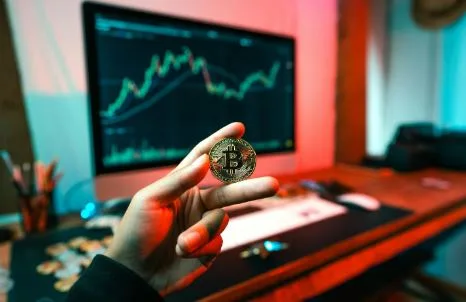Lessons for beginners: What is a crypto market?
Ready to trade crypto? If the answer is yes, you’re about to enter the crypto market, the environment where you can buy and sell whatever digital coin you find interesting.
In several ways the crypto market is similar to the stock market, so in case you’re familiar with the second, you might find it easier to comprehend how the first functions. A crypto market is a place where you can learn more about crypto projects, purchase digital coins, and sell digital assets. Suppose, you’re new to the industry you probably don’t really grasp the idea of the crypto market and still have plenty to learn about how a crypto market works and how you can be a successful trader. Because there are several cryptocurrencies available, there are also multiple crypto markets you can access.
What crypto users agree a market is
Dictionaries usually define the term of market as a gathering of individuals where goods and services are regularly purchased and sold. Sometimes the word is also used to describe a place where people meet in person to exchange services and goods. The term market can also be used to refer to a geographical area where assets are exchanged like the Asian or US market. Crypto investors can also use it to refer to the demand for a particular asset, like the Bitcoin market.
A crypto market is usually an environment where economic activity takes place, and in which sellers and buyers come together and have a direct impact on supply and demand. Crypto prices usually play a significant role in determining asset prices.
You can also refer to the crypto market as a collection of exchanges where you can trade digital currencies. These exchanges lack a physical presence and take the form of digital platforms. You can operate on two types of crypto exchanges, centralized and decentralized. Sometimes you can even find hybrid platforms that are a combination of the two.
Let’s discuss about how these exchanges differ
Centralized exchanges are usually backed by an entity that facilitates the transactions between users. You’ll notice that the most popular crypto exchanges among investors are centralized because they are usually easier-to-use and more reliable. Beginning crypto investors often start with centralized exchanges and as they learn more about the sector, they switch to decentralized exchanges.
Decentralized exchanges are peer-to-peer networks that enable crypto users to complete operations without the assistance of a third party. The advantage with them is they are quite challenging to hack and offer a high level of privacy. However, you’ll notice that some of them don’t accept fiat currencies and are more challenging to navigate. Uniswap is one of the most popular decentralized exchanges.
What drives prices in the crypto market?
Just like in traditional markets, supply and demand are the key forces behind price movements in the crypto market. When more people want to buy a cryptocurrency than sell it, the price goes up. When selling pressure outweighs buying interest, the price drops.
But what influences supply and demand? Several factors come into play:
- News and Media Hype: Positive news like ETF approvals or institutional adoption can cause prices to surge, while hacks or regulatory crackdowns can trigger sell-offs.
- Investor Sentiment: Fear and greed often drive crypto markets more than fundamentals. That’s why tools like the Crypto Fear & Greed Index are popular among traders.
- Macroeconomic Events: Inflation data, interest rate decisions, or geopolitical tensions can also impact crypto prices, especially as digital assets become more tied to global finance.
- Tokenomics: The way a cryptocurrency is structured, including its max supply, burn mechanisms, staking rewards, and governance model, can affect its long-term value.
Order books, market makers, and liquidity
To understand how trades are executed, you need to peek behind the curtain at something called the order book. This is a real-time list of buy and sell orders for a particular cryptocurrency on an exchange. Market orders are executed instantly at the best available price. Limit orders let users set the price they’re willing to buy or sell at, which may take time to fill if the market doesn’t reach that level.
The bid-ask spread, the difference between the highest price someone is willing to pay and the lowest price someone is willing to accept, reflects a crypto asset’s liquidity. The tighter the spread, the more liquid the market is, which typically means less slippage and better trading conditions.
Market makers play a vital role by constantly placing buy and sell orders, helping to reduce volatility and maintain healthy liquidity.
How do trading pairs work?
Trading in crypto markets usually happens in pairs. You might see something like BTC/USDT, which means you’re trading Bitcoin against Tether (a stablecoin). If you buy this pair, you’re exchanging your USDT for BTC. If you sell it, you’re converting BTC back to USDT. Exchange platforms offer hundreds of pairs involving major coins, altcoins, and stablecoins. This system allows you to trade crypto for crypto, even without converting everything to fiat currency.
How does regulation impact the market?
The regulatory environment is one of the most important and evolving factors in how crypto markets work. Different countries have different approaches, some are embracing innovation with open arms, while others remain cautious or restrictive. Clearer rules can build investor confidence and lead to greater adoption, while uncertainty or restrictive laws may cause markets to retreat. Exchanges like Binance often adapt to changing regulations by obtaining licenses, updating compliance measures, and educating users on responsible trading.
Who participates in the market?
Crypto markets are remarkably diverse, and participants range from individual retail investors to institutional giants:
- Retail traders make up a large portion of the volume and bring significant market dynamism.
- Institutional investors, such as hedge funds and asset managers, are increasingly entering the space with large capital and sophisticated strategies.
- Developers and projects also play a part, often influencing sentiment based on the progress and adoption of their technologies.
Is it all just speculation?
While speculation is a significant driver in the crypto market, especially in its early days, the space has matured considerably. Increasingly, crypto is being used for real-world applications:
- Cross-border payments
- Decentralized finance (DeFi)
- Non-fungible tokens (NFTs)
- Blockchain-based gaming
- Supply chain transparency
The market is also evolving toward greater utility and adoption, which will likely influence price stability and investor behavior over time.
Final thoughts
Crypto markets are fast-paced, high-risk, and full of opportunity. Unlike traditional financial systems, they are global, decentralized, and always on, offering anyone with an internet connection the ability to participate. But with great opportunity comes great responsibility.




